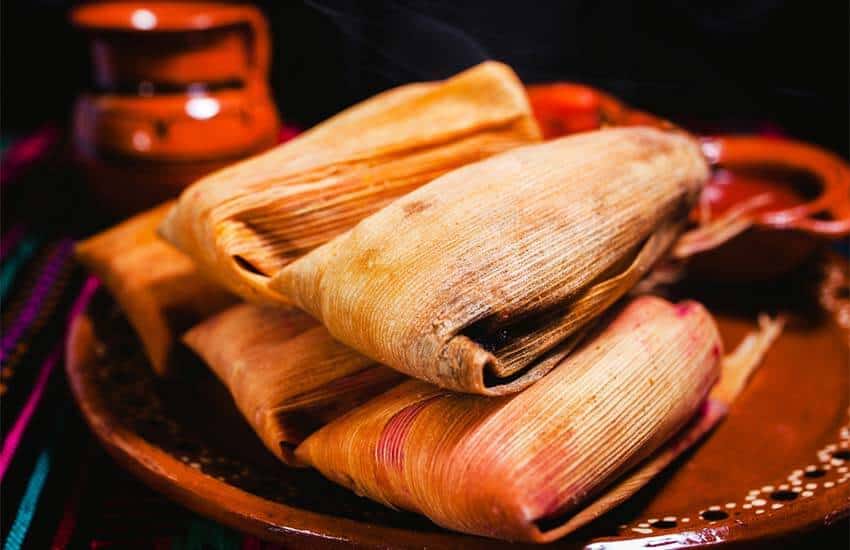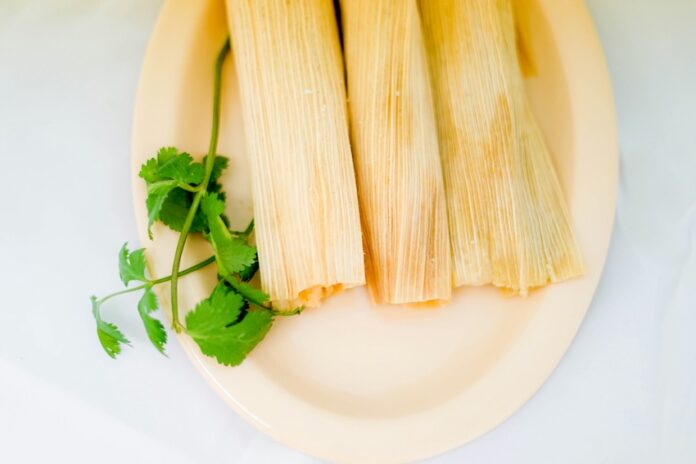The history of Tamales is long and suitably delicious. However, the staple food is actually very important for all Mexicans during this coming month. February 2 is approaching, and Mexicans are filled with excitement because it’s the day we celebrate Día de la Candelaria (Candlemas), and that can only mean one thing: we’re going to eat tamales. While tamales are enjoyed year-round, I invite you to think of February 2 as the unofficial National Tamal Day and to celebrate it alongside all Mexicans.
What is a tamal?
The Spanish word tamal originates from the Nahuatl word “tamalli,” which means “wrapped.” Today, there are over 5000 ways of preparing tamales, but they all share some key features: a tamal is made from corn dough wrapped in corn husks or banana leaves. These treats are steamed to make them tender and fluffy.

Tamales have traditionally been stuffed with ingredients such as chicken, pork, fish, chili peppers, beans or fruit. In modern times, you can also find corn dough flavored with cacao, blueberries or strawberry, among other options.
The origin of the tamal
In a country where corn was domesticated over 9000 years ago, it is natural that people found countless ways to use this ingredient. Tamales have been being cooked since as early as 2,500 years ago. In some areas, tamales were filled with ingredients such as now-unthinkable dog meat, worms or insect larvae, as well as some of the fillings we still use today.
For ancient Mesoamerican people, tamales were not only a daily meal, easy to transport and highly nutritious, but they also held sacred significance. They were offered in ceremonies and religious festivals because, for ancient civilizations, corn symbolized a connection to various gods in multiple cultures and religions.
Voir cette publication sur Instagram
Why do we eat tamales on February 2?
Tamales are traditionally eaten on February 2 for a fascinating reason connected to early marketing strategies. During Spain’s colonization of what is now Mexico Catholic priests aimed to evangelize Indigenous cultures by replacing their existing religions with Catholicism.
Indigenous cultures had their own festivals honoring gods associated with the agricultural cycle, particularly during late January and early February, which marked the beginning of the planting season. Catholic priests recognized this timing as an opportunity to substitute the Indigenous gods and the purpose of the celebrations with Christian observances.
Candlemas is a liturgical celebration that commemorates the presentation of the infant Jesus at the Temple in Jerusalem. During this celebration, processions where pilgrims march with lit candles are held in Rome, Jerusalem and other Catholic regions, symbolizing Jesus as the light of the world. Recognizing that tamales were part of pre-Christian religions in Mexico, Catholic priests allowed Indigenous communities to continue incorporating offerings of tamales in Catholic celebrations like Candlemas.
Whatever the reason, eat a tamal
You don’t need to be Catholic or Indigenous to prepare and enjoy a tamal. So here’s an easy recipe if you want to try making this delicious dish. Just remember what my grandmother always said: when kneading the dough, make sure to avoid anger or negative thoughts, which can ruin it.
Easy green tamales
Ingredients
- 500 g corn masa (for tortillas)
- 200 g pork lard (or vegetable shortening)
- 1 cup chicken broth
- 1 tsp baking powder
- 2 cups shredded chicken
- Salt to taste
- Corn husks (soaked in hot water until softened)
- 1 cup of green salsa (homemade or store-bought)
Instructions
- Prepare the masa: In a large bowl, beat the lard until fluffy. Add the masa, baking powder and salt. Gradually incorporate the chicken broth until achieving a light consistency. To test if it’s ready, drop a small amount of masa into a glass of water; if it floats, it’s perfect.
- Prepare the filling: Mix the shredded chicken with the green salsa, ensuring it is well combined.
- Assemble: Spread a portion of masa in the center of a corn husk. Add a spoonful of the chicken and salsa filling. Wrap the tamal by folding in the sides and sealing the bottom.
- Cook: Stand the tamales upright in a steamer, leaving space for steam to circulate. Cook for approximately 1.5 hours or until the masa easily separates from the husk.
- Serve: Serve the tamales hot, optionally topped with extra green salsa. Pair them with a comforting atole or coffee.
A new ritual
Let’s create a new tradition: making tamales a good-luck ritual. Eating tamales can be our way to wish each other a spectacular 2025, filled with great successes.
María Meléndez is a Mexico City food blogger and influencer.
